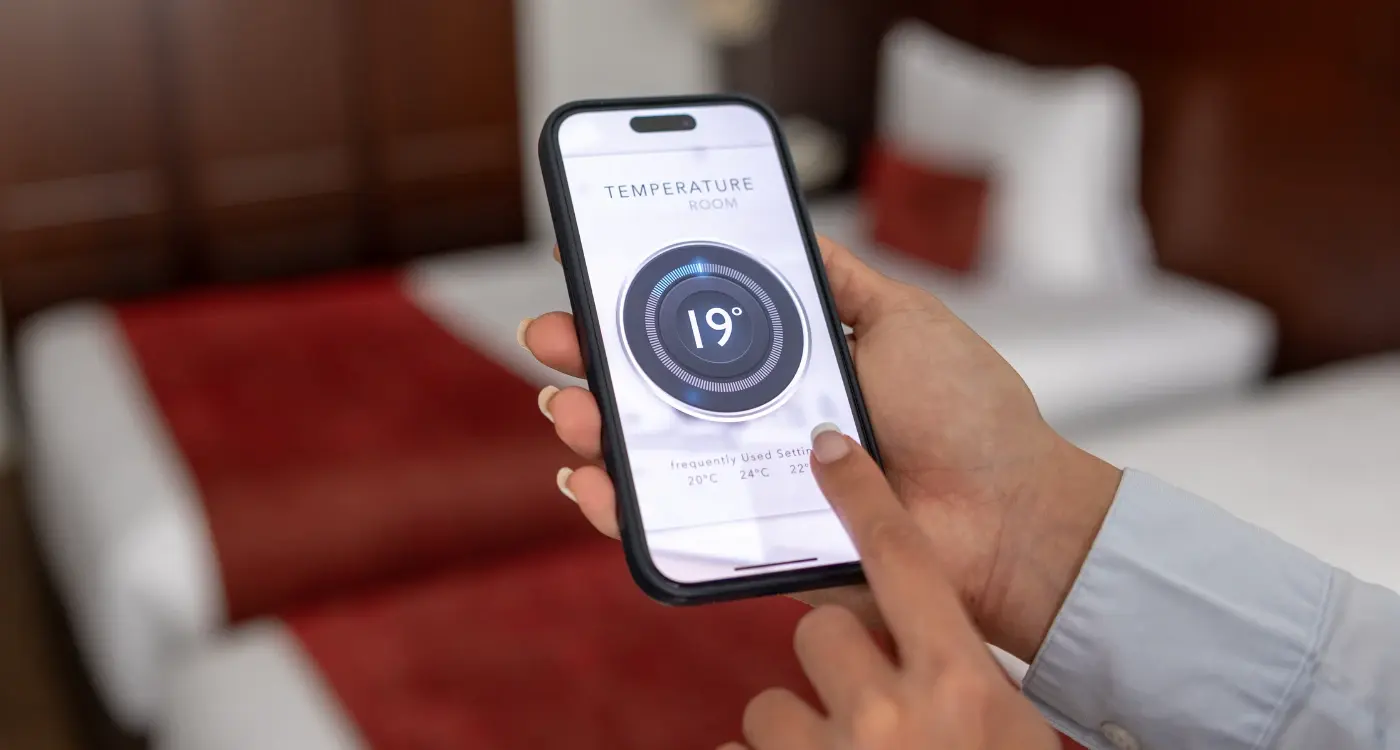What File Formats Do I Need For AR Content In My App?
Ever wondered why some AR apps feel smooth and professional whilst others stutter and crash? The secret often lies in something most developers don't think about until it's too late—file formats. I've been working with AR apps for years now, and trust me, getting your file formats wrong is like trying to play a DVD in a cassette player; it just won't work properly!
When you're building an AR app, you're not just dealing with regular app files. You need 3D models that look realistic, textures that don't pixelate when users get close, sounds that play at the right moment, and animations that run smoothly. Each type of content needs its own special file format, and picking the wrong one can make your app slow, buggy, or even unusable.
The difference between a good AR experience and a great one often comes down to the technical decisions you make before you even start coding
AR apps are becoming more popular every day, but many developers still treat file formats as an afterthought. This guide will walk you through exactly which file formats you need for different types of AR content—from basic 3D assets to complex animations. By the end, you'll know how to make smart choices that keep your app running smoothly and your users happy.
Understanding AR File Formats
When I first started working with AR apps, I'll be honest—the sheer number of different file formats nearly made my head spin. You've got 3D models, textures, animations, audio clips, and video files all working together to create that magical AR experience. Each type of content needs its own specific format to work properly on mobile devices.
Think of AR file formats like different languages that your phone needs to understand. Just as you wouldn't try to read a French book if you only spoke English, your AR app can't display a 3D model if it's saved in the wrong format. The good news? Most AR platforms support a standard set of formats that work across different devices and operating systems.
Why Format Choice Matters
The format you choose affects three main things: file size, quality, and compatibility. A massive 3D model might look stunning on a desktop computer, but it'll make your mobile app crawl to a halt—or worse, crash completely. I've seen apps that took thirty seconds just to load a simple AR object because someone used an uncompressed format.
Mobile devices have limited processing power and storage space compared to desktop computers. That's why choosing the right format isn't just about making things work; it's about making them work well. Your users won't wait around for slow-loading AR content, no matter how impressive it looks once it finally appears. The future of AR technology depends on these optimisation decisions.
3D Model Formats for AR
When it comes to 3D assets for augmented reality apps, choosing the right file format can make or break your user experience. I've seen too many projects struggle because they picked the wrong format early on—trust me, it's not something you want to discover halfway through development!
The most popular format you'll encounter is glTF (Graphics Language Transmission Format). This format was specifically designed for modern 3D applications and works brilliantly with AR. It keeps file sizes manageable whilst maintaining good quality, which is exactly what you need for mobile AR applications. Most AR frameworks support glTF natively, making your development process much smoother.
Popular 3D Model Formats
- glTF (.gltf/.glb) - Best for web-based AR and modern mobile apps
- FBX - Great for complex models with animations
- OBJ - Simple format, good for basic static models
- USD/USDZ - Apple's preferred format for iOS AR apps
- 3MF - Microsoft's format, useful for Windows AR experiences
Apple has their own preferred format called USDZ, which works seamlessly with ARKit and Safari. If you're targeting iOS users specifically, this format offers the best performance and integration. For cross-platform apps, glTF remains your safest bet.
Keep your 3D models under 50MB for mobile AR apps. Larger files will cause loading delays and frustrated users who might abandon your app before it even starts working.
Texture and Material Files
Right, let's talk about texture and material files—the stuff that makes your AR objects look realistic rather than like plastic toys. Without these files, your 3D models would appear flat and boring; nobody wants that in their AR experience!
The most common texture format you'll encounter is PNG. These files handle transparency beautifully, which is perfect when you need parts of your AR object to be see-through or have soft edges. JPEG files work well too, but they can't handle transparency—so keep that in mind when choosing between them.
What Makes Textures Work
Your textures need to be square and follow power-of-two dimensions (512x512, 1024x1024, 2048x2048). This isn't just a random rule—mobile devices process these sizes much more efficiently, and your app will run smoother as a result. Visual elements like textures play a crucial role in user experience.
Material Files You'll Need
Material files tell your AR app how surfaces should behave. Does your object have a shiny metal finish or rough concrete texture? That's where material files come in. Common formats include MTL files (which pair with OBJ models) and PBR materials that define how light bounces off surfaces.
Keep your texture file sizes reasonable—anything over 2MB per texture will slow down your app and frustrate users. Trust me, I've seen apps crash because someone thought a 10MB texture was a good idea!
Audio Files for AR Experiences
Audio brings AR experiences to life—it's what transforms a visual overlay into something that feels real and immersive. I've worked on countless AR projects and the difference between apps with good audio and those without is night and day. The sound design can make or break user engagement.
For AR applications, you'll typically need WAV files for high-quality audio effects and MP3 files for longer background tracks or music. WAV files are uncompressed, which means they sound brilliant but take up more storage space. MP3 files are compressed and smaller, making them perfect for background audio that doesn't need to be crystal clear.
Spatial Audio Considerations
Modern AR experiences use spatial audio—sound that changes based on where virtual objects are positioned in 3D space. This requires specific audio processing, but the source files remain the same formats. You'll want to keep your audio files at 44.1kHz sample rate for mobile devices; anything higher just wastes storage without noticeable quality improvements.
The right audio can make a virtual dragon sound like it's breathing right behind you, whilst poor audio makes even the most impressive 3D model feel flat and lifeless
Don't forget about ambient sounds and user interface audio feedback. These smaller audio files help users understand when they've interacted with AR elements successfully. Keep these files short and punchy—usually under two seconds each. Many developers overlook how user feedback mechanisms impact the overall experience.
Video Content in AR Apps
Video files in AR applications work differently than standard video content—they need to blend seamlessly with the real world around them. The most common format you'll encounter is MP4, which offers excellent compression and works well across different devices. Most AR frameworks support this format without any issues, making it a safe choice for your projects.
When working with video in AR, you're typically dealing with two main scenarios: videos that play on virtual screens within your AR environment, or videos used as textures on 3D objects. For virtual screens, standard MP4 files work perfectly fine. But if you're mapping video onto 3D surfaces, you might need to consider the video's resolution and aspect ratio more carefully.
Video Format Considerations
File size matters more in AR than traditional video applications because your app needs to maintain smooth performance whilst tracking the real world. Here's what works best:
- MP4 with H.264 encoding for broad compatibility
- MOV files for iOS-specific applications
- WebM for web-based AR experiences
- Keep resolution reasonable—1080p is usually sufficient
Remember that video content will impact your app's download size and loading times. Users won't wait around for massive video files to load, so optimising your content is non-negotiable. Consider streaming longer videos rather than bundling them with your app.
Animation and Rigging Files
Getting your 3D models to move naturally in AR is where the magic really happens. I've worked on countless AR projects and the difference between a static model and one that moves smoothly is night and day. Your users will notice straight away if something doesn't feel right about how objects behave in their space.
Animation files store all the movement data for your 3D models. Think of them as instructions that tell your character how to walk, wave, or dance. The most common format you'll encounter is FBX, which handles both the model and its animation data in one file. This makes life much easier when you're importing assets into your app.
Common Animation File Formats
- FBX - The industry standard that works with most AR platforms
- GLTF/GLB - Lightweight options perfect for web-based AR
- DAE (Collada) - Good for simple animations but less common now
- USD/USDZ - Apple's preferred format for iOS AR apps
Rigging files are equally important—they define how your 3D model's skeleton works. Without proper rigging, your animated character might bend in weird ways or look completely broken. Make sure your rigging files match your animation format; mixing different formats can cause headaches you really don't want to deal with. Adobe Flash used to be popular for animations, but modern mobile developers have moved away from Flash due to performance issues.
Keep your animation files under 5MB each when possible. Large animation files can cause your AR app to stutter or crash on older devices, which will frustrate your users.
Conclusion
Right then, we've covered quite a bit of ground when it comes to AR file formats—from 3D models and textures to audio files and animations. I know it can feel overwhelming at first, but once you start working with these formats, they become second nature. The key thing to remember is that different platforms prefer different formats, so you'll need to plan accordingly.
If I had to pick the most important takeaway from this guide, it would be this: start simple. You don't need every single format we've discussed for your first AR app. Choose the formats that work best for your target platform and build from there. GLB files are brilliant for web-based AR, whilst USDZ works perfectly for iOS apps. Getting these basics right will save you countless hours down the line. Consider creating helpful tutorial content to guide users through your AR experience.
One last thought—AR technology moves fast, and new formats pop up regularly. What matters most is understanding the principles behind these formats rather than memorising every single specification. Once you grasp why certain formats exist and what problems they solve, adapting to new ones becomes much easier. Your AR app will be better for it, and your users will have a smoother experience.
Share this
Subscribe To Our Learning Centre
You May Also Like
These Related Guides

How Do I Design for Offline Functionality in My App?

What Permissions Do I Need for IoT Features in My App?



